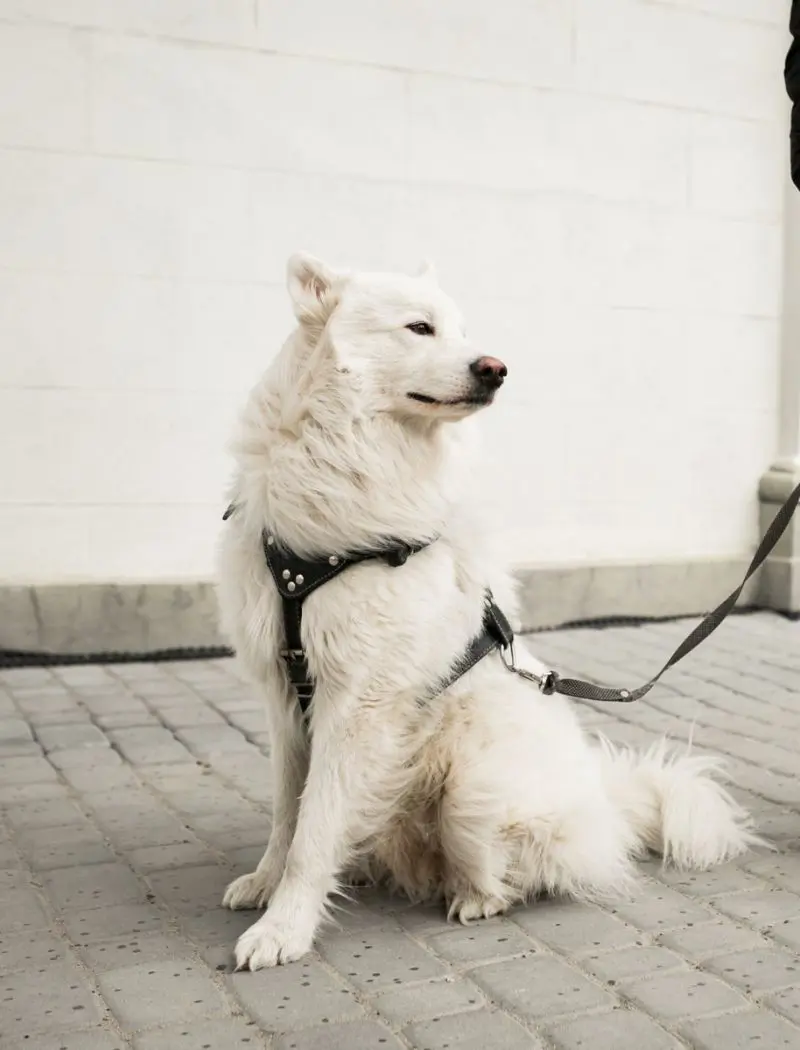Can Dog Get Braces?
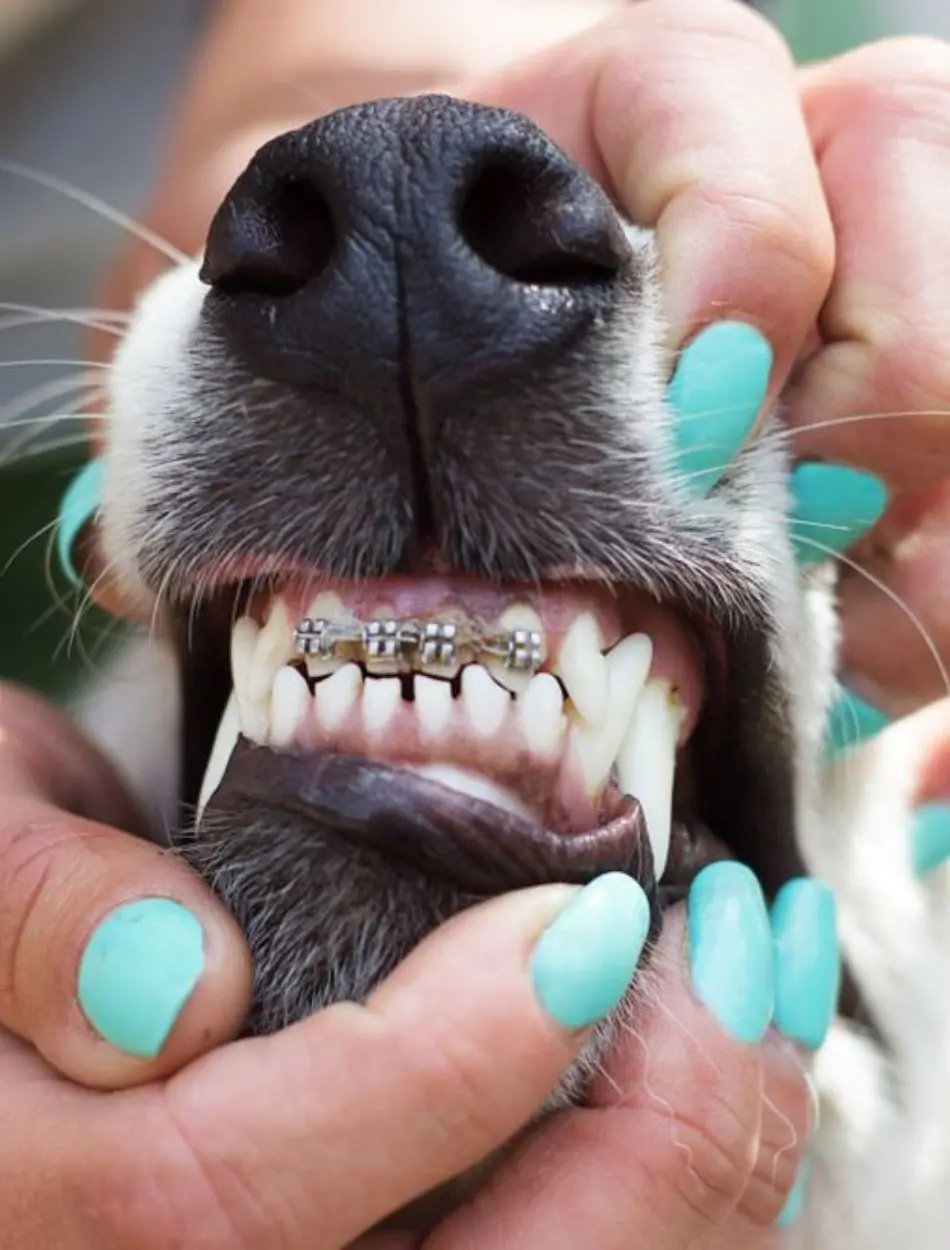
We love our dogs and always want the best for them, so taking care of their bites can benefit their health. If you weren't aware dogs like us, humans can also benefit from braces in their teeth to keep them aligned.
While dog braces may appear funny to some people, this orthodontic intervention can allow dogs with severe orthodontic misalignment and biting difficulties to chew and eat normally, which they could not do before treatment.
Does My Dog Need Braces?

Your poor dog may have suffered trauma that pushed the teeth into new spaces not conducive to proper eating and may be painful for your pup in its new position. If other teeth for your dog are being affected by the new positioning of existing teeth-such as tooth striking tooth-braces may be able to reposition them.
Braces may correct the problem if your dog does not have a proper scissor bite where the top teeth fill in the gaps between the bottom teeth, and has stopped eating because of discomfort or pain.
Dogs who have stopped eating because of mouth pain should be seen by your veterinarian for a complete diagnosis. With your dog's teeth lining up improperly, they could be hitting other teeth, causing them to crack or hit the soft palate, which could cause your dog pain.
Common Dental Issues In Dogs
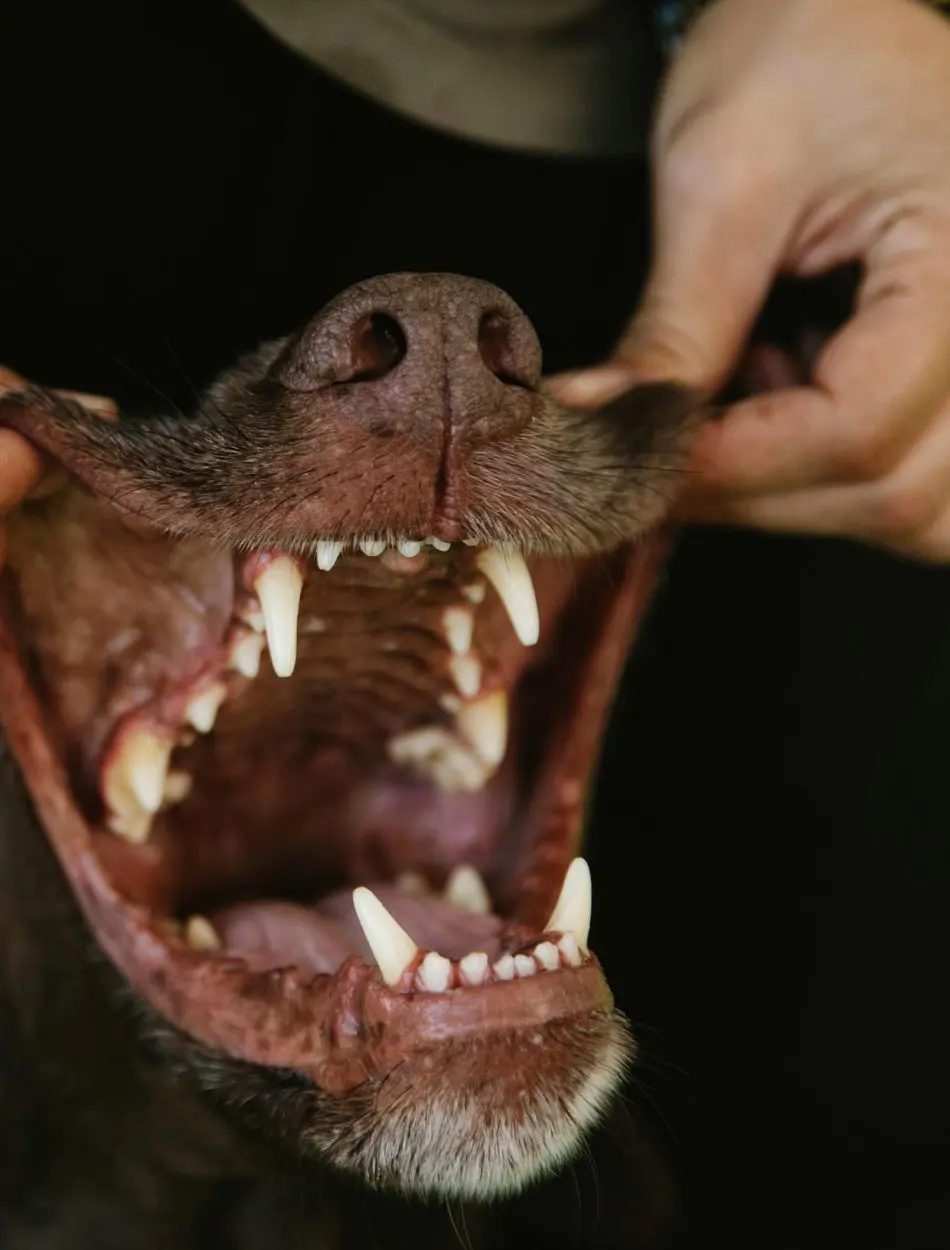
Just like human beings, dogs might suffer from dental problems that take a toll on their general health and well-being. As unbelievable as it may sound, dog braces are important solutions for solving select orthodontic problems. Braces thus are not merely for cosmetic improvement but a medical intervention that secures the quality of life for the dog and prevents further problems in the future.
Misaligned Teeth
Misaligned teeth in dogs may be a result of genetics, injury, or poor growth. The misalignment of the teeth results in discomfort for a dog, hence making feeding difficult. This, in turn, causes them to have digestive problems since they end up swallowing their food without proper breakdown.
With misaligned teeth comes weakened enamel, which makes the dog more predisposed to tooth decay or damage. If left untreated misaligned teeth can also have a serious impact on the general ability of a dog to close its mouth appropriately, possibly contributing to chronic discomfort and other secondary dental complications. Braces are thus needed for such cases.
Abnormal Bite
An abnormality of the bite is a condition in which the top and bottom teeth do not come together as they should. The main causes of this condition are congenital or acquired, meaning there could either be genetic tendencies or developmental problems involved.
These conditions can lead to pain while chewing food, undernutrition, and an increased likelihood of injury to the gums and other tissues lining the mouth. Braces may help correct this abnormal bite by aligning the teeth properly, thus increasing the dog's comfort and further enhancing overall oral health.
Overcrowding of Teeth
Overcrowding occurs with all of the dog's teeth do not fit within the jaw when there is not enough space. This may cause them to push against other teeth, making them misaligned or hard to clean between. Commonly, this happens with the possible result of getting a buildup of plaque and tartar more easily, raising the chance of having gum diseases and decaying of the teeth.
This can lead to chronic pain and discomfort while chewing or even playing with toys, as overcrowding may cause further impingement. Braces will make space and guide the teeth into their correct position, improving oral hygiene and comfort.
Retained Baby Teeth
Retained baby teeth are when some of the dog's baby teeth do not fall out as they should and the adult teeth start growing in beside them. This can result in crowding of the teeth, and increase the possibility of tooth decay and gum disease.
The retained baby teeth may cause some discomfort and could result in abnormal bite patterns if left unattended. It is further explained that the removal of these baby teeth allows the adult teeth to erupt and, with guidance from braces, come into the correct position, and the proper development of the dog's bite is ensured.
Open Bite
An open bite is a relationship of the dog's teeth when the mouth is closed. It is characterized by the failure of the front ones to meet and thus leaves a gap between the upper and lower teeth. Congenital effects, trauma, and vices of chewing on hard objects can cause such an occurrence.
Open bites impede the proper grasping and chewing of food by the animal which creates digestion problems and probable malnourishment may arise. Furthermore, the exposed teeth may be more prone to damage or decay. Braces can be applied to close the gap and position the teeth correctly, allowing the dog to eat with a full range of motion and to maintain good oral health.
Typical Age To Get Dog Braces
The age for installing braces in a dog's mouth is from six months up to two years, basically, the age when human children are fitted with them. It is the most crucial period because a dog's teeth are at the development stage, and addressing the issues early may provide a better chance of avoiding bigger conditions later in life.
The fitting of braces, although considerably more common in younger dogs, is also possible with older dogs when dental problems occur later in the dog's life. The success generally depends on the overall health of the dog and the kind of dental problem the dog has. It is very important that the owner himself provides proper monitoring regarding the dental alignment of his dog.
Knowing About the Process
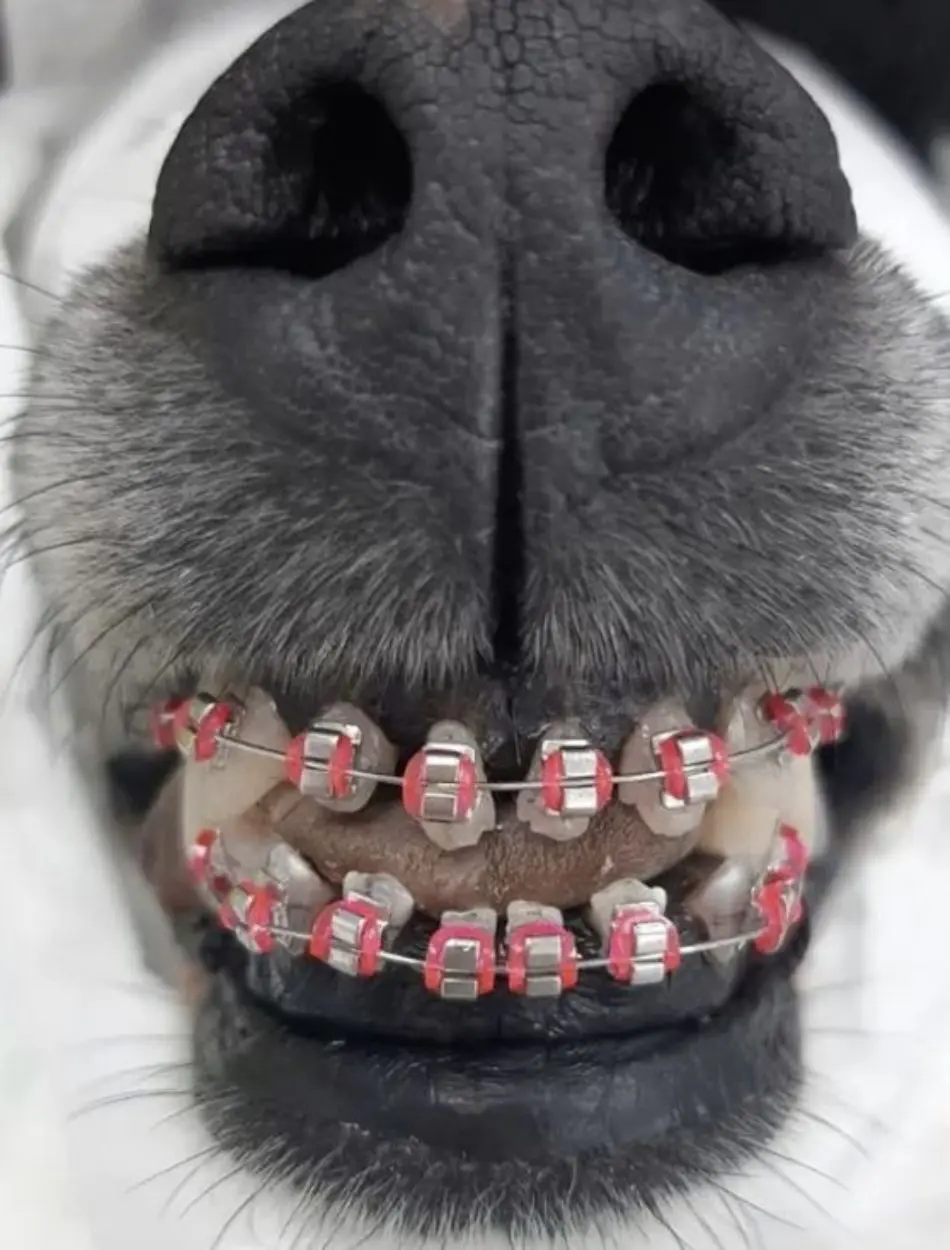
When a dog is considered to need braces, the process becomes multi-staged for the comfort and effectiveness of the pet. The first thing to do is to have a complete dental check-up with the veterinarian, regarding the condition of the dog's teeth and jaws. X-rays can give a clear picture of the condition of the bone inside the jaws.
At this point, once the braces are needed, the dog can be sedated or under anesthesia just to ease the process and minimize stress. Metal braces are carefully attached to the teeth of the dog through special adhesives. This will work by applying gradual pressure to realign the teeth and correct malocclusions.
Cost and Care
Depending on a lot of factors, such as the severity of the dental problem, the braces applied, and the treatment duration, the cost can range in great deal. On average, pet owners can expect to spend anywhere from $1,500 to $5,000 in treatments for a set of braces for their dogs.
Though the financial investment is one of magnitude, it's important to weigh in on the long-term benefits that will extend to the health of the dog. Proper dental care does not stop once the braces are fitted onto the teeth and its maintenance requires diligent cleaning and regular trips to the vet to ensure no complications occur.
The dog owner will have to be keen on cleaning the teeth of his dog since food particles that get stuck in these braces can easily cause an infection. A soft diet can also be prescribed, too, in order for the dog to avoid further damaging the braces or causing discomfort. Though the investment can be quite heavy with time and money, the reward of a healthy, comfortable dog makes it all worthwhile.
Are Dog Braces Safe

Dog braces overall are considered harmless, given that a proper veterinarian prescribes these; however, like any other medical procedure, there is always a risk versus benefit weighing against one another. The major benefit of dog braces is the fact that they help correct dental defects causing pain, showing difficulty in eating or leading to health problems later on.
Properly aligned teeth can keep issues such as gum disease, jaw misalignment, and even digestive problems at bay but it is not devoid of risks altogether. Application of the braces involves sedation, which is always associated with some risk, especially in older dogs or those suffering from various health complications. Poor brace care may also lead to infections and other complications, thereby negating the very benefit the treatment is supposed to address.
It is also important to consider the comfort of the dog. While a brace is fitted for dental correction, the shifting of teeth does involve temporary discomfort. Whether a dog needs to be fitted with braces or not has to be assessed by a veterinarian, keeping in view the particular needs and health of your pet.
The Science Behind Dog Braces
Dog braces work on the same basic principles as human orthodontics, using controlled pressure to gradually move teeth into a better alignment if and when a dog’s teeth are misaligned.
Materials and Types of Braces Used for Dogs
A brace for a dog needs to be strong enough to maneuver the position of the teeth therefore they are usually made from stainless steel or titanium materials. The types of braces that have been applied to the dogs are the same as the ones applied to human beings.
It may be appreciated that some cases need individual braces that are designed depending on the size and form of the teeth and jaw of the dog. On occasion, they may also use clear aligners as well, but this is not as frequent as the other approaches. The material for making the product as well as the type to be used vary with the nature of the dental problem and the health condition of the dog for an effective and comfortable treatment to be conducted on the oral cavity of the dog.
Duration of Treatment
The time span for orthodontic treatment in dogs depends on the extent of the dental problem and how the dog cooperates with the treatment applied. On average, a dog may have to put on braces from six months into one year, but in some cases may take a little longer.
During this period, regular veterinary consultations become very crucial to monitor the progress and make whatever adjustment is needed in the braces. Prolonged tooth movement requires pressure to be constantly exerted over a period of time, and therefore patience during treatment is crucial to success.
Success Rates
The rates of success with dog braces tend to be high when the procedure is done by a qualified veterinarian and the proper care of the dog is followed. Dental alignment improves a lot in most instances, which could include improved oral health, ease in eating, and reduced discomfort.
Many of them could also expect the proper positioning of teeth, avoiding bite issues, and avoiding further dental problems or jaw issues in the future. Although each case may be different, most dogs under orthodontic treatment do indeed enjoy a better quality of life post-treatment.
Alternative Treatments
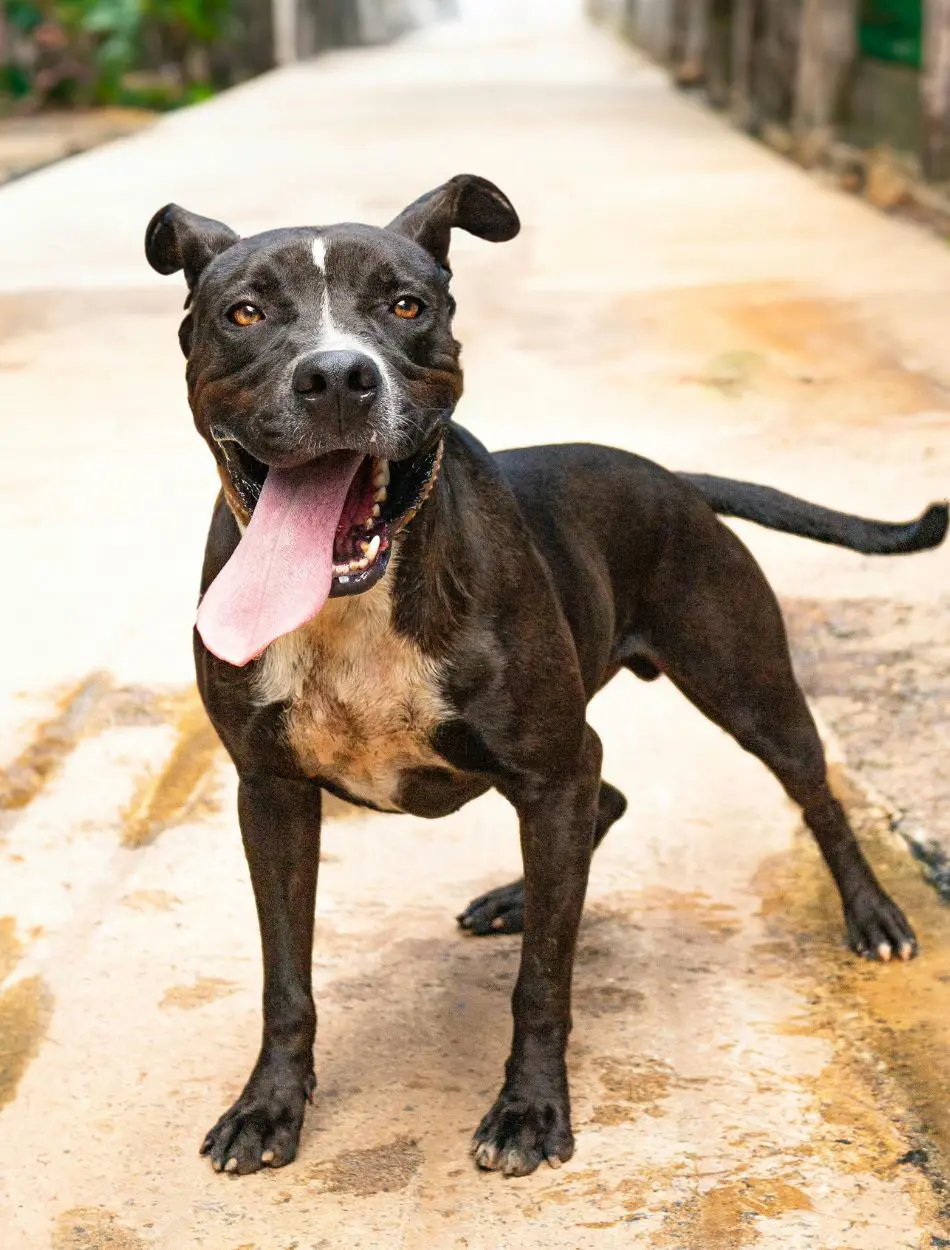
While braces do tend to help most dental problems in canines, they are not the only treatment available. Minor dental issues-especially for older canines and health-compromised ones-might be treated with less invasive methods. One common alternative involves the use of dental splints that can stabilize a dog's teeth without requiring full braces.
Dental splints will often be employed for shorter-term correction or temporary stabilization after an injury. Another alternative is tooth extraction, which may be an option if the misaligned tooth causes extreme pain or is unlikely to see any real benefit from orthodontic intervention.
Other preventative measures include routine dental cleaning and good oral hygiene to help avoid many of the problems that would otherwise call for braces. All options have their own pros and cons, and the ideal option is different for each dog based on health, age, and the particular dental problem.
How Dog Braces Have Improved Lives
Success stories of dogs undergoing orthodontic treatment with braces really show the difference the procedure can make in the quality of life a pet may endure. For example, dogs suffering from extreme malconclusions that kept them in constant pain and made eating very uncomfortable were able to enjoy their food without discomfort after treatment.
In some cases, the use of braces prevented more serious health issues from arising, such as misalignment of the jaw, which could have created chronic pain or the need for surgical intervention. Usually, owners will say that dogs act much happier and more energetic after their dental issues have been resolved, likely because they are no longer dealing with the constant discomfort of misaligned teeth.
Recent posts
Dogs
What Are Dogs Afraid Of? 10 Common Dog Fears And Phobias
Becoming a dog owner comes with certain responsibilities, including identifying their fears and phobias. From an unpleasant sound to an unfamiliar scent, many factors can trigger a fear response. Understanding a dog's psychology can be complicated; a...
How To Put A Dog Harness On: Step By Step
A dog harness is a popular and safe alternative to a neckband that is designed to distribute pressure more equally across the structure while walking or running. They are worn around the chest and torso, making them a comfortable option for many dogs...
15 Webbed Feet Dogs Breeds That Can Swim
Dogs often become excited when they are near a water body like a pool, river, or beach. Unlike cats, canines are not wary of water and are usually seen enjoying their swims at their nearby water hole. However, enthusiasm alone doesn't dictate a dog's...
20 Fun Activities For Dogs During Winter
Winter can be a great time to embrace the chilly season with creative activities that keep your furry friend happy and entertained. They provide a perfect opportunity to explore unique ways to bond with your dog. From snowy outdoor experiences to coz...
How To Introduce Baby To Dog: A Step By Step Guide
Adding a new baby to your home is exciting, but it can also be a big change for your dog. A dog's natural curiosity involves a patient, prepared, and considerate introduction to a newborn baby. A smooth transition is important for the safety of your ...
Do Dogs Cry? What Does Their Tears Mean
Dogs are known to shed tears as a way to lubricate their eyes and not because of sadness or emotional pain like humans. Tears in dogs may indicate medical issues like eye infections or blocked tear ducts that may cause discomfort to them. It is very ...

